Crispy on the outside and creamy on the inside, Takoyaki is a signature dish from Osaka, Japan. Enjoy the concentrated umami flavor from the dashi stock in each ball.
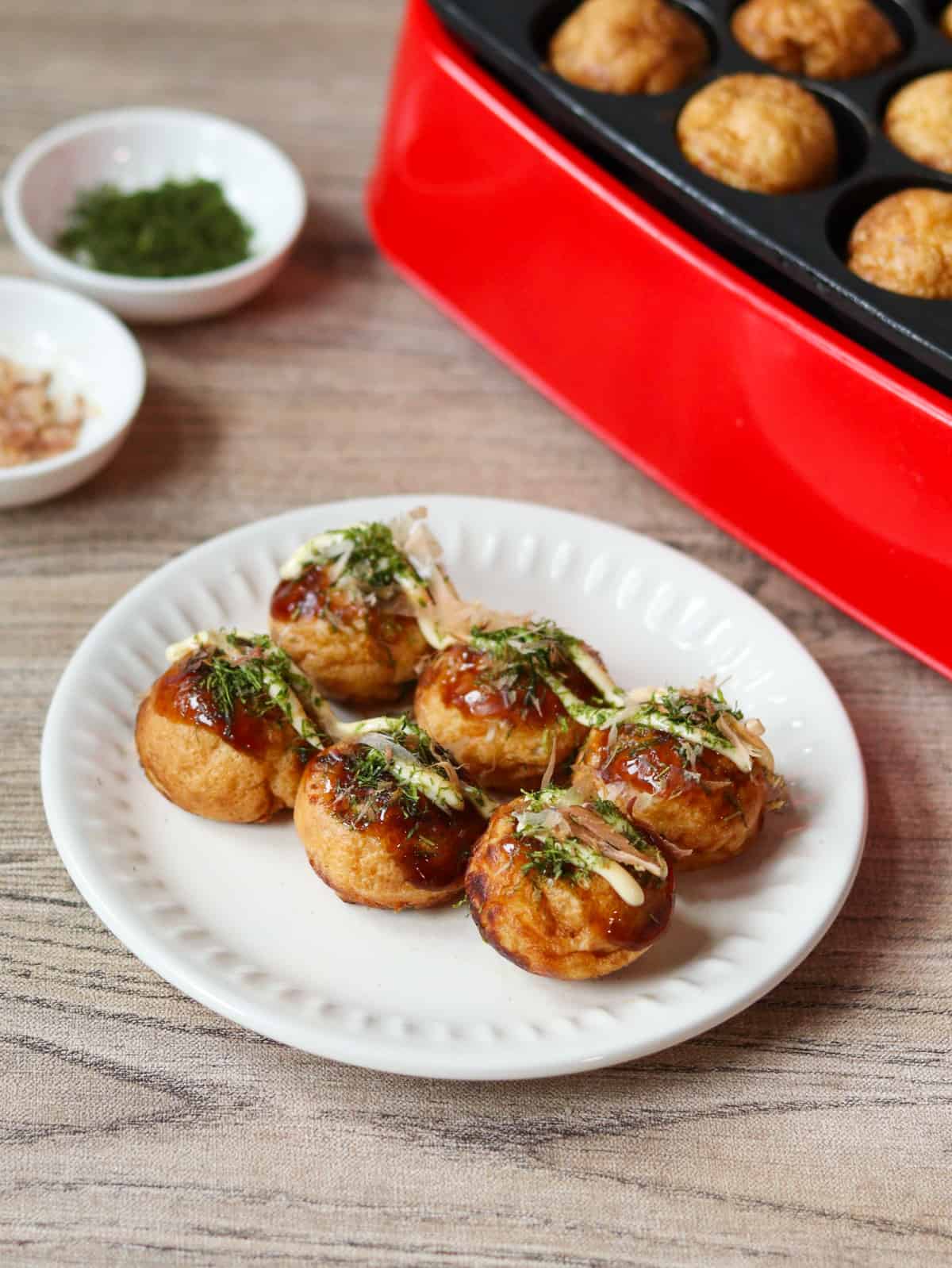
Jump to:
What is Takoyaki?
Takoyaki is a Japanese dish made from a batter of wheat flour, beaten eggs, and dashi stock, cooked on a specialized iron plate called a 'takoyaki maker,' with octopus pieces, forming small balls. "Tako" means octopus, and "yaki" refers to grilling or cooking. By using a takoyaki maker with many round, hollow cavities, you can cook the batter into ball shapes. Additionally, it traps the octopus flavor inside each ball and achieves a crispy outside and a creamy inside.
While some people might think of eating takoyaki with takoyaki sauce, I personally recommend trying it without sauce. This is because takoyaki made with rich dashi allows you to enjoy the flavors of the ingredients even more. In this recipe, you can choose whether or not to use sauce.
This recipe is special to me, as I learned it from a takoyaki stall owner many years ago. It has received high praise from everyone I have ever served it to, and it is a recipe that I have been using for over twenty years now.
Common ingredients
The common ingredients for takoyaki and their characteristics are as follows:
• Boiled octopus
It is an essential ingredient of takoyaki, providing a chewy texture and rich flavor.
• Green onions (scallions)
They add texture and color to takoyaki. Usually, they are mixed into the batter, but recently, they are sometimes served on top of takoyaki.
• Beni shoga (red pickled ginger)
It adds spiciness, acidity, and color to takoyaki. If beni shoga is not available, you can substitute it with regular pickled ginger.
• Tenkasu (tempura bits)
They are indispensable for takoyaki. They add richness to the flavor and give the texture a crispy element.
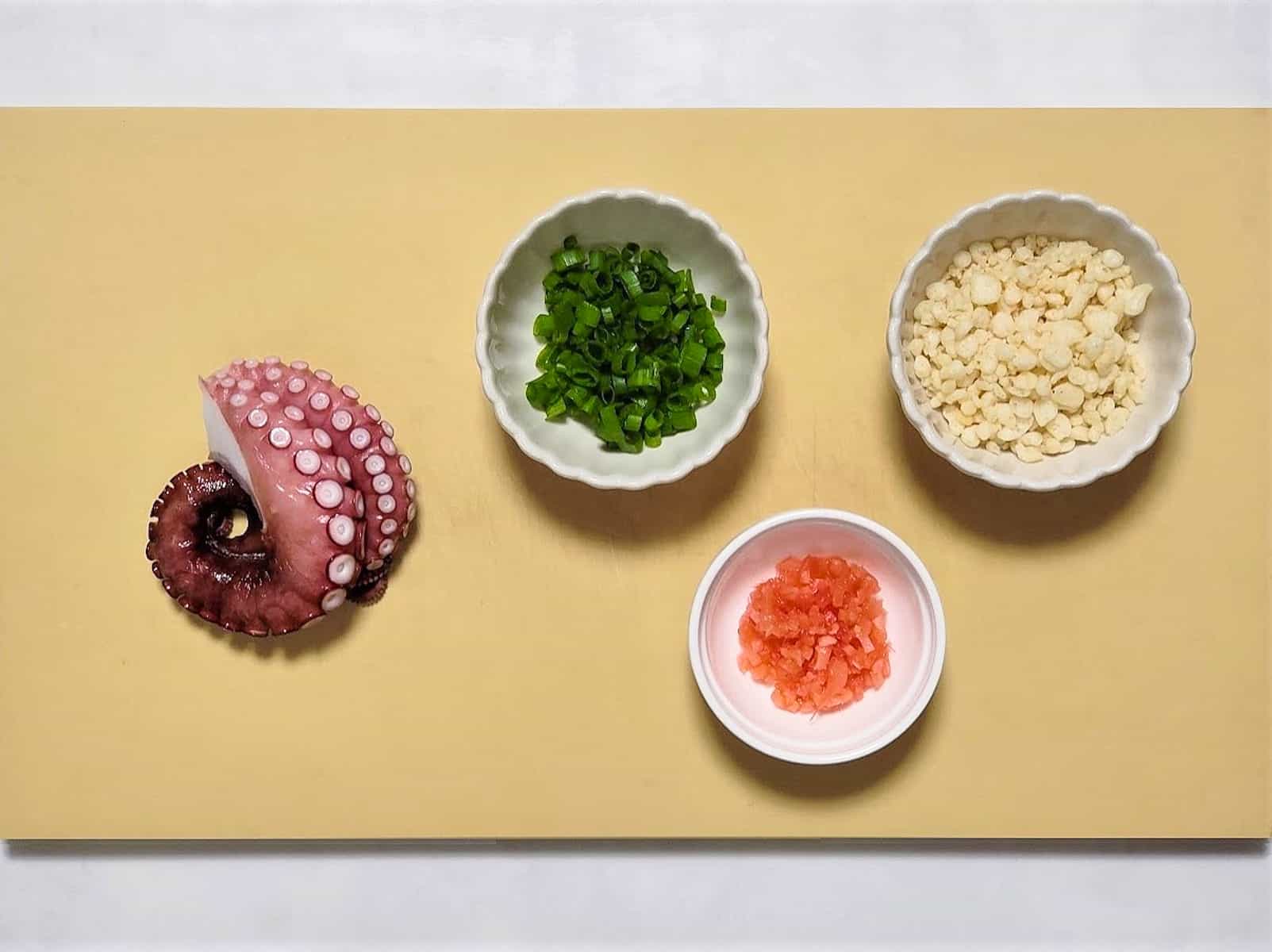
Alternatives to octopus
Takoyaki cannot be made without octopus. However, you can enjoy takoyaki-style dishes by using alternative ingredients such as beef tendon, konjac, sausages, and cheese. It is also common in Japanese households to enjoy these dishes with ingredients other than octopus.
By the way, if you use beef tendon and konjac as ingredients, it is called "Rajioyaki" instead of takoyaki. Rajioyaki is a predecessor of takoyaki, and you can make it using the same method as takoyaki.
Common toppings
Takoyaki can be enjoyed with a variety of toppings. When takoyaki batter is seasoned with soy sauce and served without takoyaki sauce, it can be tasty on its own. However, if you prefer to enjoy it with takoyaki sauce, Japanese mayonnaise, aonori (dried green seaweed flakes), and bonito flakes (katsuobushi) are commonly used as toppings. These are all optional, so you can add them according to your taste.
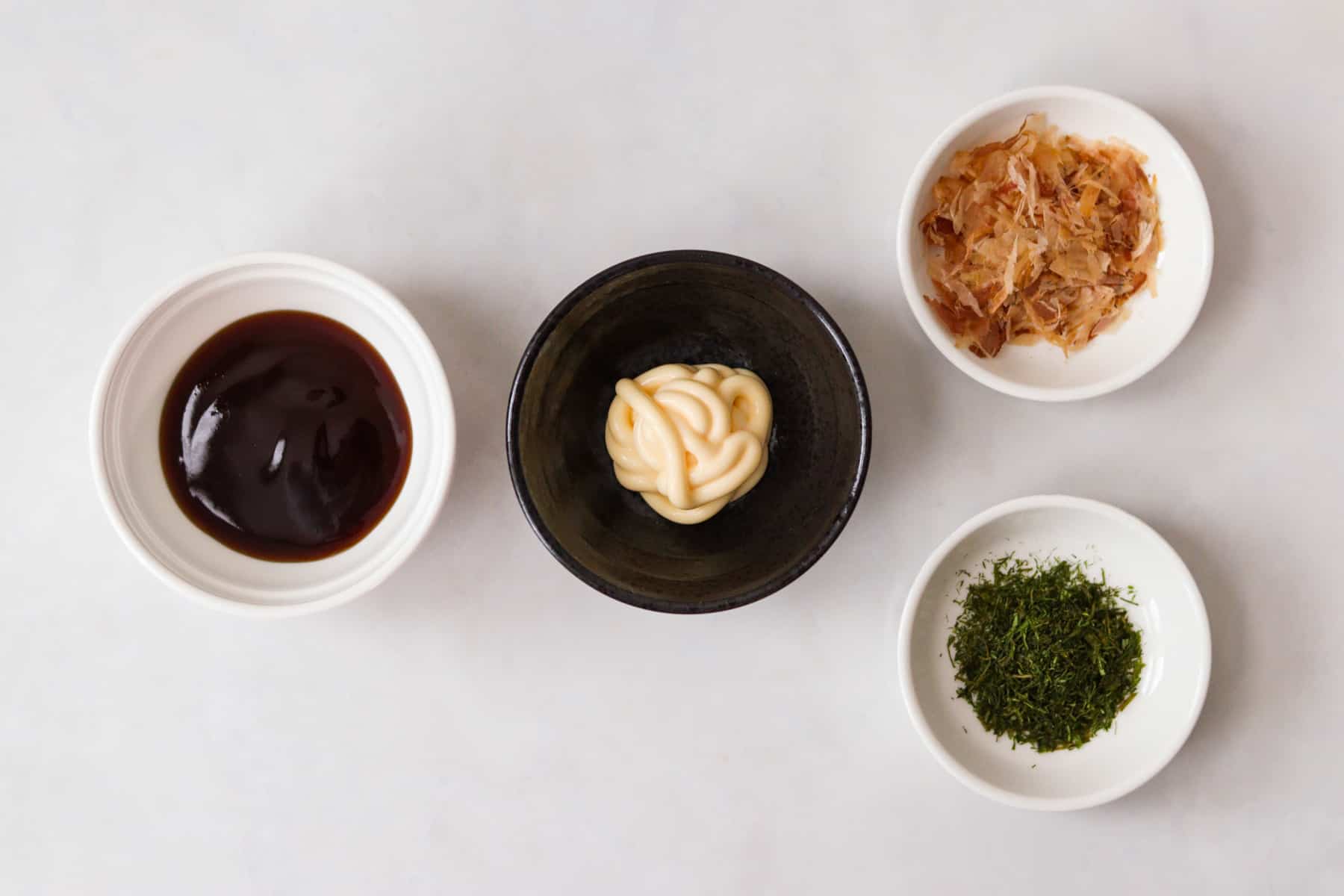
Takoyaki maker guide
The biggest drawback to making takoyaki yourself is that you need a takoyaki maker. While you can cook takoyaki batter in a pan and still enjoy the flavor, you won't be able to achieve the unique texture of authentic takoyaki. Takoyaki makers are available on Amazon and other online stores, so if you want to try making takoyaki at home, you should consider getting one.
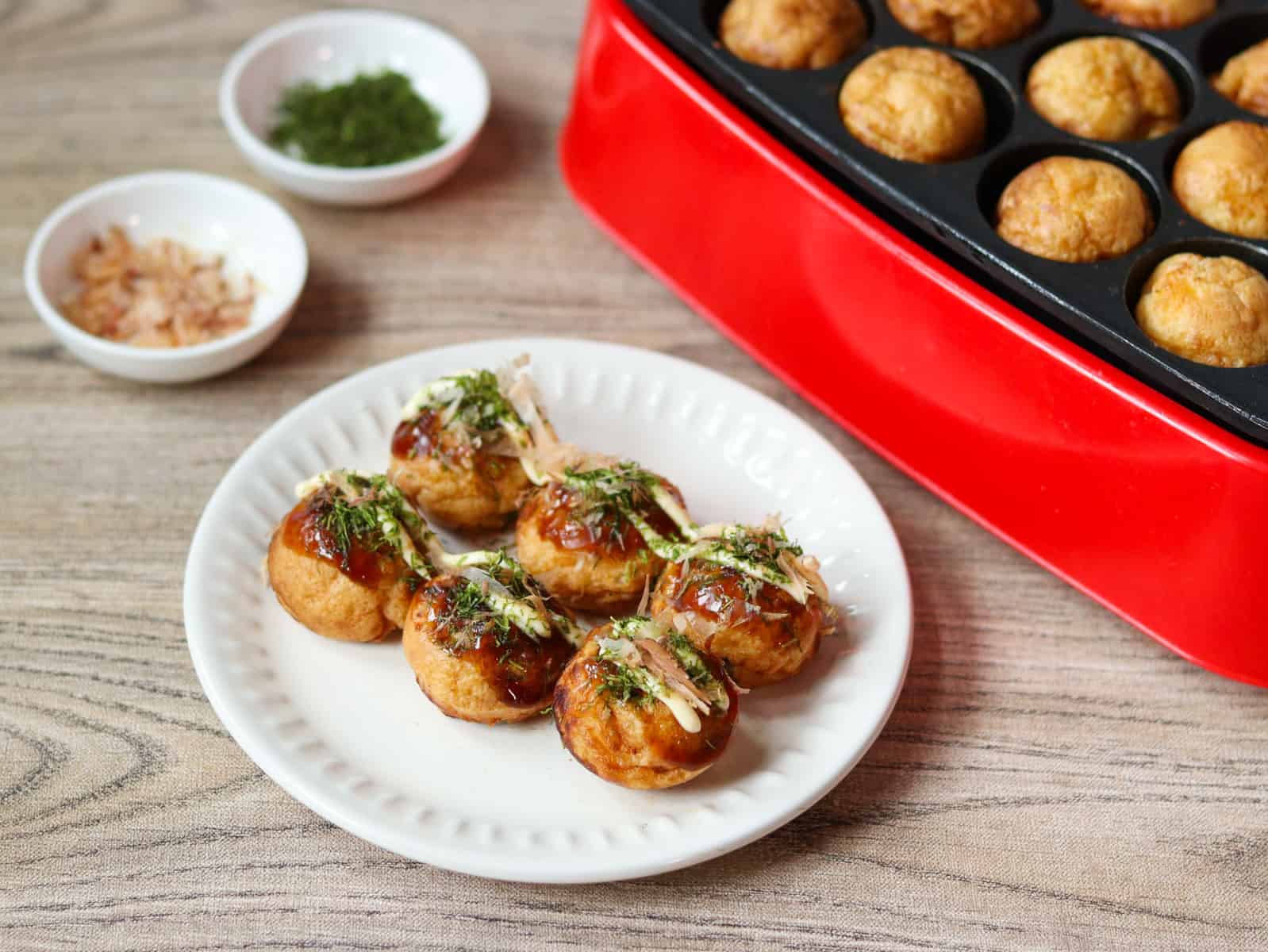
📋Step-by-step recipe
Equipment
- Takoyaki maker
- takoyaki picks or skewers
Ingredients
- 3 oz boiled octopus
- 6 green onions / scallions (⅓ tsp for each takoyaki ball)
- 1 Tbsp beni shoga (red pickled ginger) (⅛ tsp for each takoyaki ball)
- 4 Tbsp tenkasu (tempura bits) (½ tsp for each takoyaki ball)
Takoyaki batter:
- 1 large egg (about 2.1 oz/60 g, including shell)
- ½ tsp sugar
- ¼ tsp salt
- 2 tsp soy sauce (If you are using takoyaki sauce, reduce the amount by half.)
- 1 ¼ cups chilled dashi stock (Please refer to the linked page for instructions on how to make it. For plant-based options, see the pages on kombu dashi and shiitake dashi.)
- ½ tsp baking powder
- ⅗ cup all-purpose flour (plain flour)
Toppings (optional):
- takoyaki sauce
- Japanese mayonnaise (such as Kewpie Mayo. For a homemade version, please refer to the linked article.)
- aonori (dried green seaweed flakes)
- shaved bonito flakes (katsuobushi)
Instructions
🕒 Total: 25 mins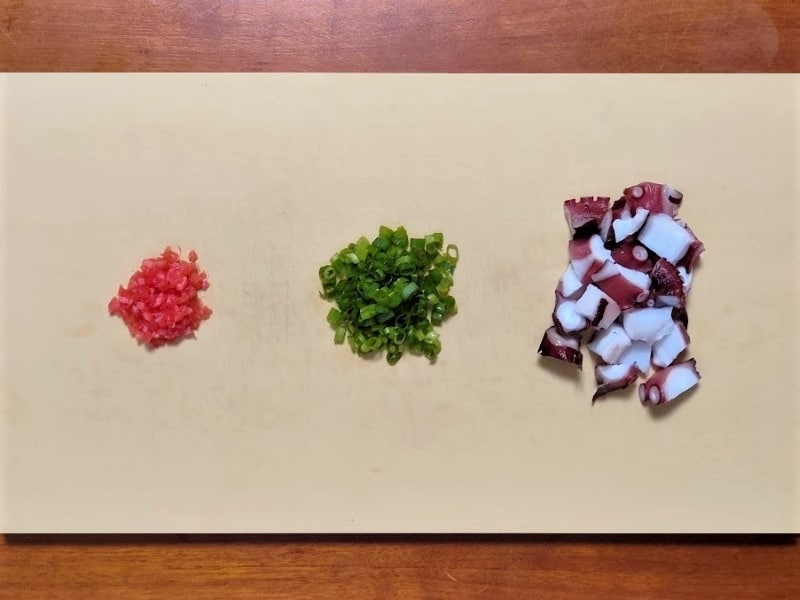
Step 1
Cut octopus into bite-sized pieces, about ⅖ inch (1 cm) wide. Thinly slice green onions. Finely chop beni shoga.
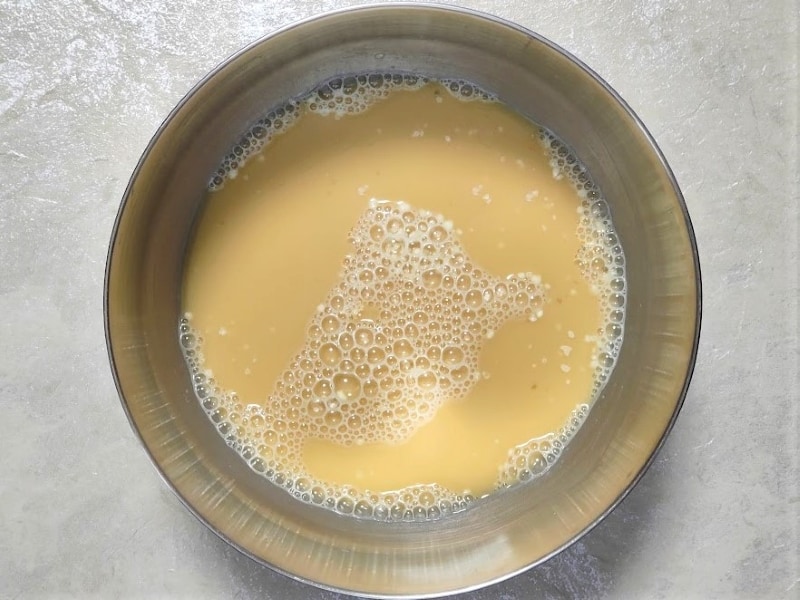
Step 2
Crack egg into a large bowl and beat it. Add sugar, salt, soy sauce, chilled dashi, and baking powder to the bowl, and mix everything together. Then, gradually add flour in multiple portions, whisking thoroughly each time to prevent lumps from forming. The takoyaki batter is ready.
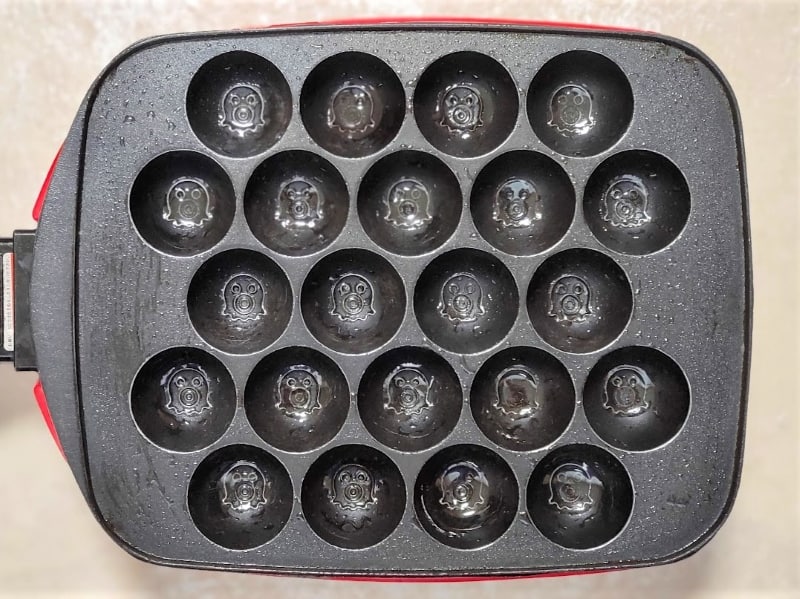
Step 3
Preheat a takoyaki maker to high heat (392℉/200℃ or above). Pour oil into a small bowl and soak the tip of a folded paper towel in it. Use the soaked towel to thoroughly coat all of the cavities and the flat surface on top of the takoyaki maker with oil.
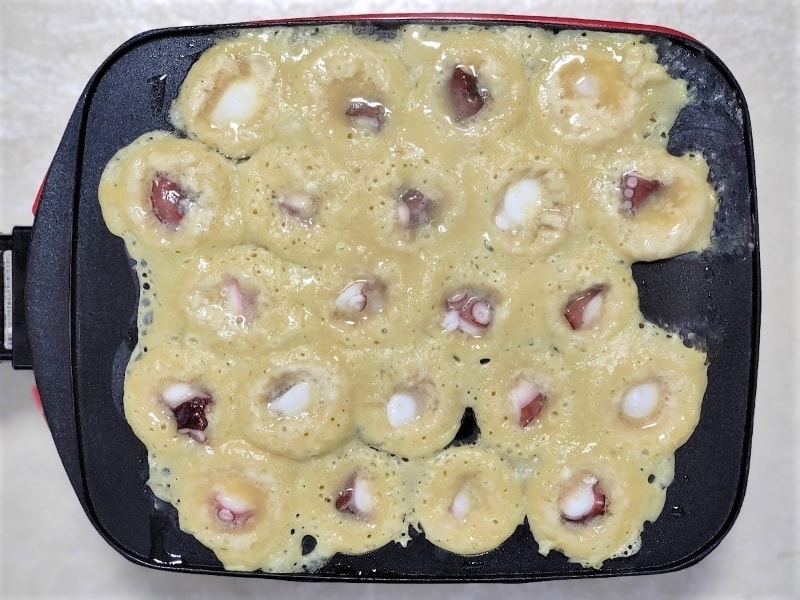
Step 4
When smoke starts to come out from the takoyaki maker, pour the takoyaki batter into each cavity, then add the chopped octopus to each cavity. It's fine if the takoyaki batter overflows from the cavities during this process.
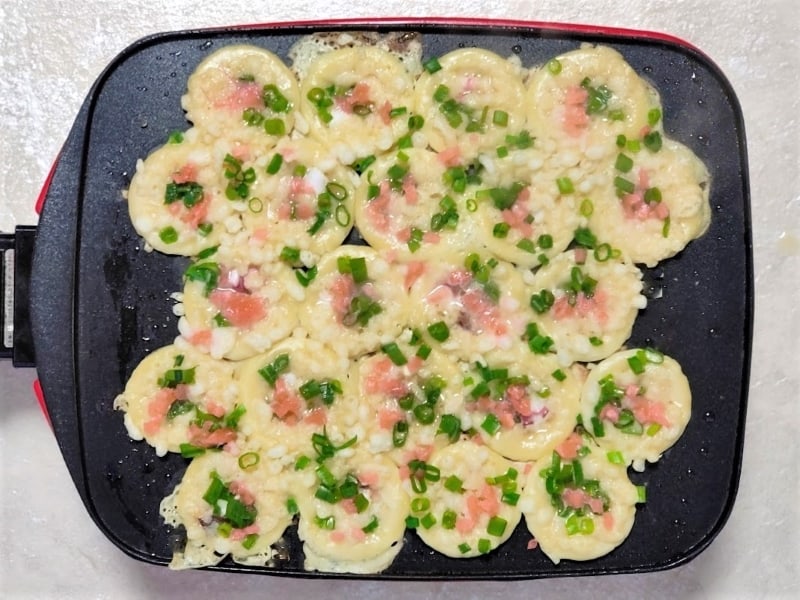
Step 5
Sprinkle tenkasu, green onions, and beni shoga evenly over each cavity. Wait until the batter on the side walls of each cavity sets.
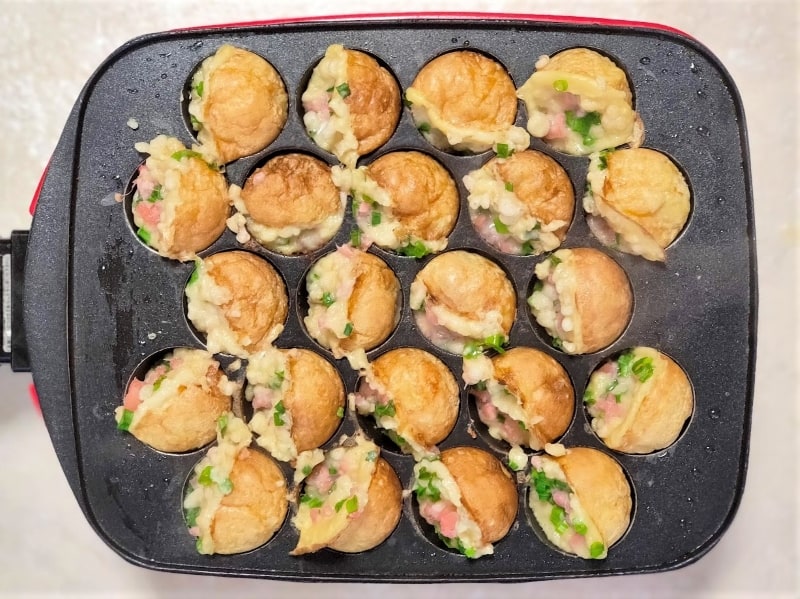
Step 6
Cut the batter on the top flat surface between each cavity using a takoyaki pick or skewer. Then, flip the cooked portion of each cavity over about 90 degrees (a quarter turn).* Wait again until the uncooked portion of the batter is cooked through.
* If the batter on the side walls has set, you can flip it over by applying a bit of force with the pick or skewer. If it doesn't flip, cook it for a little longer. It doesn't matter if the batter tears slightly.
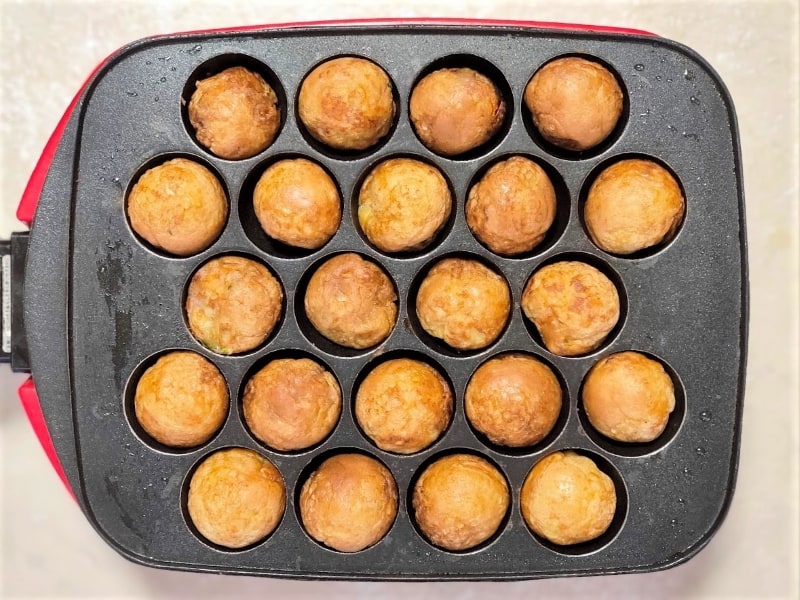
Step 7
Flip the cooked portion over an additional 90 degrees to cook the remaining uncooked portion.
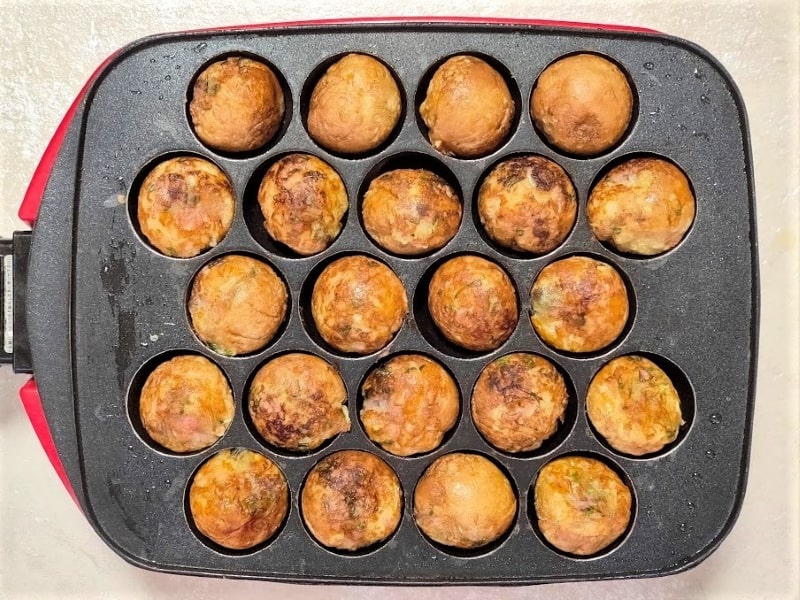
Step 8
Since the takoyaki maker might cook differently depending on the position of the cavities, if there are any lightly cooked balls, replace them with well-cooked ones. Then, turn each ball over to brown them evenly.
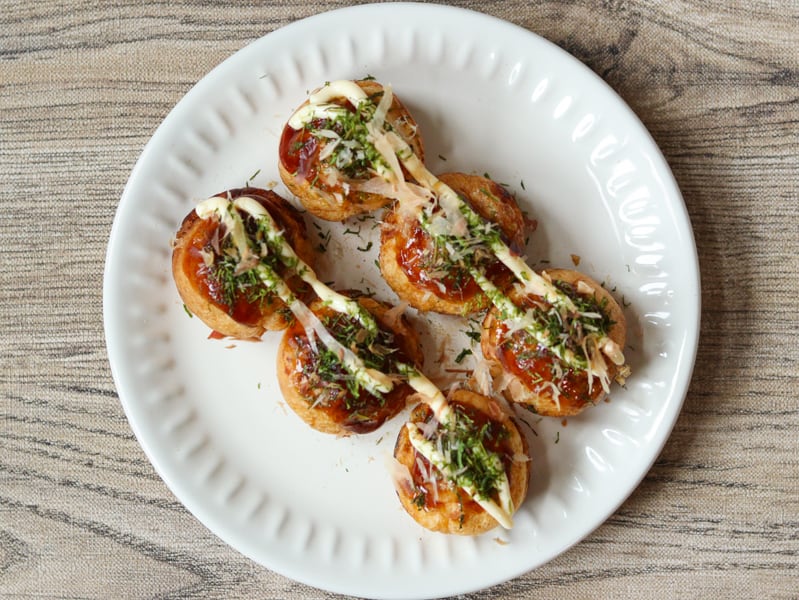
Step 9
Serve them on individual plates. If you enjoy them with sauce, top each takoyaki with takoyaki sauce, Japanese mayonnaise, aonori, and bonito flakes to taste.
To store
You can store it in the refrigerator for up to a day.
Tips on how to make
- The dashi stock used in takoyaki batter should be chilled. Using chilled dashi reduces the activation of gluten in the flour, resulting in a crispier exterior for the takoyaki.
- When preparing takoyaki batter, mix eggs and dashi stock, then gradually add flour in multiple portions. This will help prevent lumps from forming and make the batter less powdery. If the lumps are less than ⅕ inch (5 mm) in size, they will dissolve over time, so you don't need to worry about them.
- Each cavity of the takoyaki maker should be well-coated with oil. This will prevent the takoyaki batter from sticking to it.
- Put the ingredients for takoyaki in the following order: octopus, tenkasu (tempura bits), and then the remaining ingredients. Adding the octopus first allows its rich flavor to be released. Next, add the tenkasu, which contains oil, helps the takoyaki cook more evenly.
- When flipping the takoyaki batter, it is recommended to turn each ball 90 degrees at a time rather than flipping them all at once. This allows the inside of each ball to cook more efficiently, resulting in a creamier texture.
If you try this recipe, I’d love to hear what you think. Please consider leaving a review and star rating in the comments below. If you enjoyed it, I’d really appreciate it if you shared it with your friends.
Recipe card
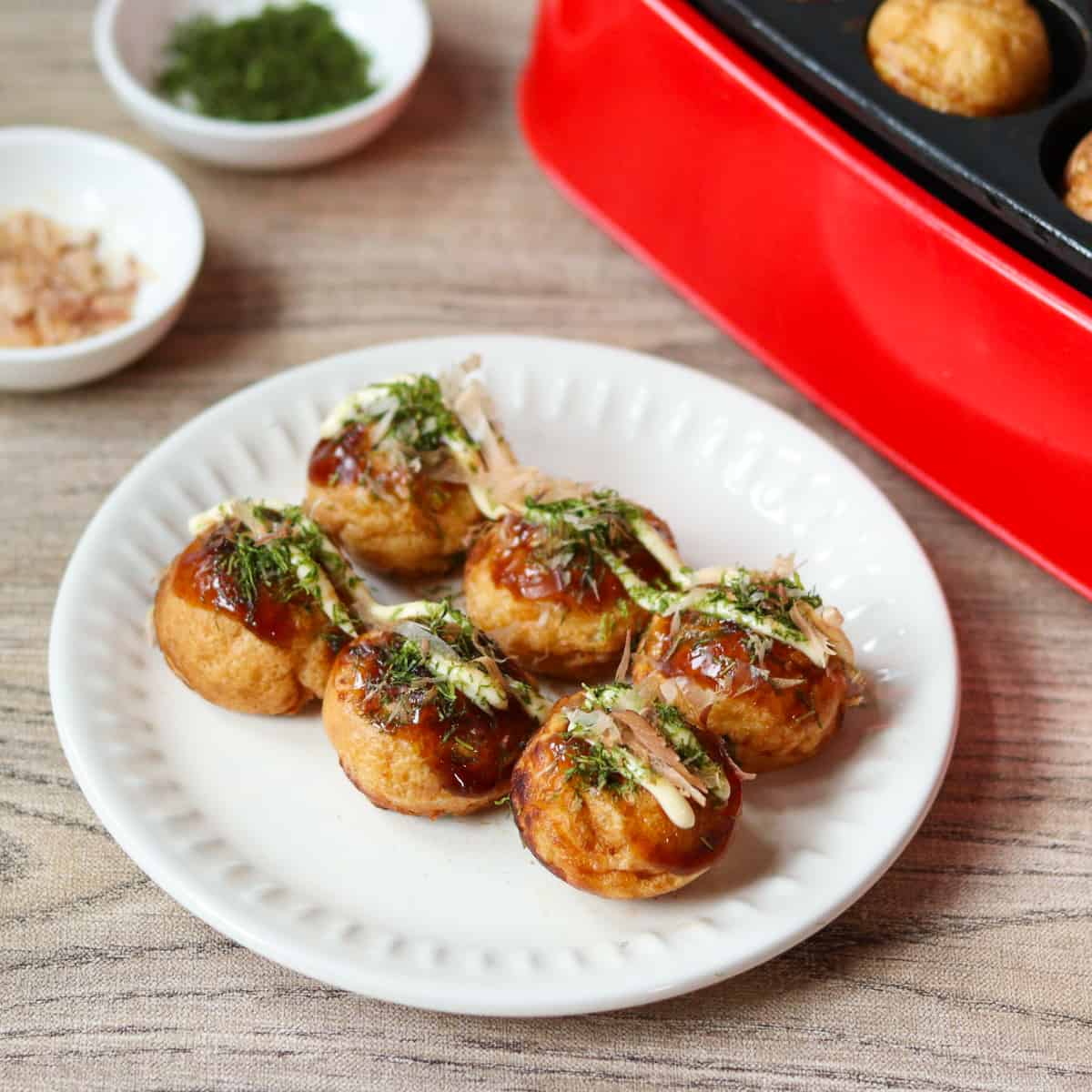
Authentic Takoyaki (Osaka's Octopus Balls)
Equipment
- Takoyaki maker
- takoyaki picks or skewers
Ingredients
- 3 oz boiled octopus
- 6 green onions / scallions (⅓ tsp for each takoyaki ball)
- 1 Tbsp beni shoga (red pickled ginger) (⅛ tsp for each takoyaki ball)
- 4 Tbsp tenkasu (tempura bits) (½ tsp for each takoyaki ball)
Takoyaki batter:
- 1 large egg (about 2.1 oz/60 g, including shell)
- ½ tsp sugar
- ¼ tsp salt
- 2 tsp soy sauce (If you are using takoyaki sauce, reduce the amount by half.)
- 1 ¼ cups chilled dashi stock (Please refer to the linked page for instructions on how to make it. For plant-based options, see the pages on kombu dashi and shiitake dashi.)
- ½ tsp baking powder
- ⅗ cup all-purpose flour (plain flour)
Toppings (optional):
- takoyaki sauce
- Japanese mayonnaise (such as Kewpie Mayo. For a homemade version, please refer to the linked article.)
- aonori (dried green seaweed flakes)
- shaved bonito flakes (katsuobushi)
Instructions
- Cut octopus into bite-sized pieces, about ⅖ inch (1 cm) wide. Thinly slice green onions. Finely chop beni shoga.
- Crack egg into a large bowl and beat it. Add sugar, salt, soy sauce, chilled dashi, and baking powder to the bowl, and mix everything together. Then, gradually add flour in multiple portions, whisking thoroughly each time to prevent lumps from forming. The takoyaki batter is ready.
- Preheat a takoyaki maker to high heat (392℉/200℃ or above). Pour oil into a small bowl and soak the tip of a folded paper towel in it. Use the soaked towel to thoroughly coat all of the cavities and the flat surface on top of the takoyaki maker with oil.
- When smoke starts to come out from the takoyaki maker, pour the takoyaki batter into each cavity, then add the chopped octopus to each cavity. It's fine if the takoyaki batter overflows from the cavities during this process.
- Sprinkle tenkasu, green onions, and beni shoga evenly over each cavity. Wait until the batter on the side walls of each cavity sets.
- Cut the batter on the top flat surface between each cavity using a takoyaki pick or skewer. Then, flip the cooked portion of each cavity over about 90 degrees (a quarter turn).* Wait again until the uncooked portion of the batter is cooked through.* If the batter on the side walls has set, you can flip it over by applying a bit of force with the pick or skewer. If it doesn't flip, cook it for a little longer. It doesn't matter if the batter tears slightly.
- Flip the cooked portion over an additional 90 degrees to cook the remaining uncooked portion.
- Since the takoyaki maker might cook differently depending on the position of the cavities, if there are any lightly cooked balls, replace them with well-cooked ones. Then, turn each ball over to brown them evenly.
- Serve them on individual plates. If you enjoy them with sauce, top each takoyaki with takoyaki sauce, Japanese mayonnaise, aonori, and bonito flakes to taste.
Notes
- You can store it in the refrigerator for up to a day.

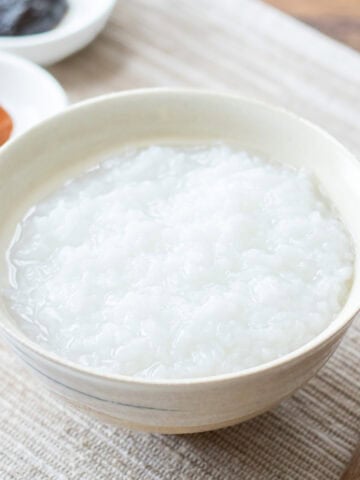
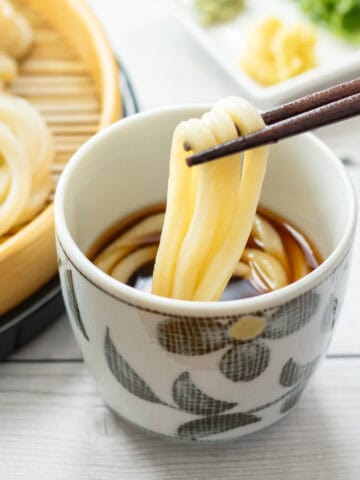
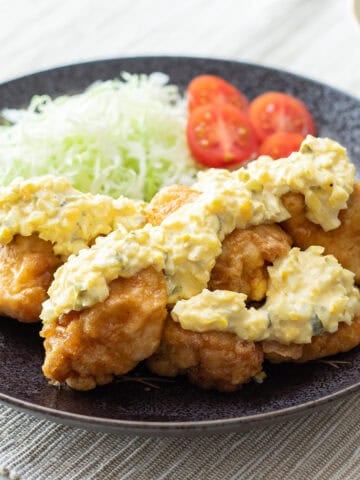

Leave a Rating and a Comment